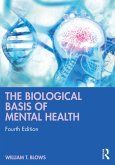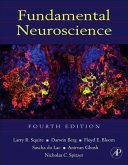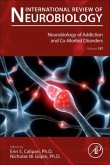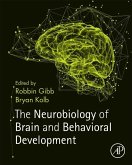William T. Blows
The Biological Basis of Mental Health
William T. Blows
The Biological Basis of Mental Health
- Gebundenes Buch
- Merkliste
- Auf die Merkliste
- Bewerten Bewerten
- Teilen
- Produkt teilen
- Produkterinnerung
- Produkterinnerung
This book explores the underlying biology and neuroscience associated with mental health and wellbeing.
Andere Kunden interessierten sich auch für
![The Biological Basis of Mental Health The Biological Basis of Mental Health]() William T. BlowsThe Biological Basis of Mental Health56,99 €
William T. BlowsThe Biological Basis of Mental Health56,99 €![Fundamental Neuroscience Fundamental Neuroscience]() Fundamental Neuroscience115,99 €
Fundamental Neuroscience115,99 €![Neurobiology of Addiction and Co-Morbid Disorders Neurobiology of Addiction and Co-Morbid Disorders]() Neurobiology of Addiction and Co-Morbid Disorders129,99 €
Neurobiology of Addiction and Co-Morbid Disorders129,99 €![Routledge Handbook of Physical Activity and Mental Health Routledge Handbook of Physical Activity and Mental Health]() Routledge Handbook of Physical Activity and Mental Health79,99 €
Routledge Handbook of Physical Activity and Mental Health79,99 €![Mental Health Across the Lifespan Mental Health Across the Lifespan]() Mental Health Across the Lifespan52,99 €
Mental Health Across the Lifespan52,99 €![The Neurobiology of Brain and Behavioral Development The Neurobiology of Brain and Behavioral Development]() The Neurobiology of Brain and Behavioral Development105,99 €
The Neurobiology of Brain and Behavioral Development105,99 €![Handbook of Emergency Psychiatry Handbook of Emergency Psychiatry]() Hani R. KhouzamHandbook of Emergency Psychiatry60,99 €
Hani R. KhouzamHandbook of Emergency Psychiatry60,99 €-
-
-
This book explores the underlying biology and neuroscience associated with mental health and wellbeing.
Produktdetails
- Produktdetails
- Verlag: Taylor & Francis Ltd
- 4 ed
- Seitenzahl: 490
- Erscheinungstermin: 16. November 2021
- Englisch
- Abmessung: 250mm x 175mm x 31mm
- Gewicht: 1002g
- ISBN-13: 9780367563196
- ISBN-10: 0367563193
- Artikelnr.: 62275485
- Herstellerkennzeichnung
- Libri GmbH
- Europaallee 1
- 36244 Bad Hersfeld
- gpsr@libri.de
- Verlag: Taylor & Francis Ltd
- 4 ed
- Seitenzahl: 490
- Erscheinungstermin: 16. November 2021
- Englisch
- Abmessung: 250mm x 175mm x 31mm
- Gewicht: 1002g
- ISBN-13: 9780367563196
- ISBN-10: 0367563193
- Artikelnr.: 62275485
- Herstellerkennzeichnung
- Libri GmbH
- Europaallee 1
- 36244 Bad Hersfeld
- gpsr@libri.de
William T. Blows was formerly a lecturer at City University of London, UK where he taught biology to nurses.
1.Introduction to the brain. 2.Brain development 3.Neural communication
4.Neurotransmitters and receptors 5.The brain-body connection: Gut
microbiota, immunity and brain gender. 6.Hormones 7.Behaviour 8.Genetics I:
Introduction and Autosomes 9.Genetics II: Sex chromosomes and gene
disorders. 10.Pharmacology 11.Illicit substance use disorders 12.Common
substance misuse 13.Emotions 14.Stress, anxiety and fear. 15.Schizophrenia
16.Antipsychotic drugs 17.Affective disorders 18.Antidepressant drugs
19.Epilepsy 20.Subcortical degenerative disorders of the brain 21.Memory
and learning 22.The ageing brain and dementia 23.Communication and
developmental disorders 24.Sleep
4.Neurotransmitters and receptors 5.The brain-body connection: Gut
microbiota, immunity and brain gender. 6.Hormones 7.Behaviour 8.Genetics I:
Introduction and Autosomes 9.Genetics II: Sex chromosomes and gene
disorders. 10.Pharmacology 11.Illicit substance use disorders 12.Common
substance misuse 13.Emotions 14.Stress, anxiety and fear. 15.Schizophrenia
16.Antipsychotic drugs 17.Affective disorders 18.Antidepressant drugs
19.Epilepsy 20.Subcortical degenerative disorders of the brain 21.Memory
and learning 22.The ageing brain and dementia 23.Communication and
developmental disorders 24.Sleep
1.Introduction to the brain. 2.Brain development 3.Neural communication 4.Neurotransmitters and receptors 5.The brain-body connection: Gut microbiota, immunity and brain gender. 6.Hormones 7.Behaviour 8.Genetics I: Introduction and Autosomes 9.Genetics II: Sex chromosomes and gene disorders. 10.Pharmacology 11.Illicit substance use disorders 12.Common substance misuse 13.Emotions 14.Stress, anxiety and fear. 15.Schizophrenia 16.Antipsychotic drugs 17.Affective disorders 18.Antidepressant drugs 19.Epilepsy 20.Subcortical degenerative disorders of the brain 21.Memory and learning 22.The ageing brain and dementia 23.Communication and developmental disorders 24.Sleep
1.Introduction to the brain. 2.Brain development 3.Neural communication
4.Neurotransmitters and receptors 5.The brain-body connection: Gut
microbiota, immunity and brain gender. 6.Hormones 7.Behaviour 8.Genetics I:
Introduction and Autosomes 9.Genetics II: Sex chromosomes and gene
disorders. 10.Pharmacology 11.Illicit substance use disorders 12.Common
substance misuse 13.Emotions 14.Stress, anxiety and fear. 15.Schizophrenia
16.Antipsychotic drugs 17.Affective disorders 18.Antidepressant drugs
19.Epilepsy 20.Subcortical degenerative disorders of the brain 21.Memory
and learning 22.The ageing brain and dementia 23.Communication and
developmental disorders 24.Sleep
4.Neurotransmitters and receptors 5.The brain-body connection: Gut
microbiota, immunity and brain gender. 6.Hormones 7.Behaviour 8.Genetics I:
Introduction and Autosomes 9.Genetics II: Sex chromosomes and gene
disorders. 10.Pharmacology 11.Illicit substance use disorders 12.Common
substance misuse 13.Emotions 14.Stress, anxiety and fear. 15.Schizophrenia
16.Antipsychotic drugs 17.Affective disorders 18.Antidepressant drugs
19.Epilepsy 20.Subcortical degenerative disorders of the brain 21.Memory
and learning 22.The ageing brain and dementia 23.Communication and
developmental disorders 24.Sleep
1.Introduction to the brain. 2.Brain development 3.Neural communication 4.Neurotransmitters and receptors 5.The brain-body connection: Gut microbiota, immunity and brain gender. 6.Hormones 7.Behaviour 8.Genetics I: Introduction and Autosomes 9.Genetics II: Sex chromosomes and gene disorders. 10.Pharmacology 11.Illicit substance use disorders 12.Common substance misuse 13.Emotions 14.Stress, anxiety and fear. 15.Schizophrenia 16.Antipsychotic drugs 17.Affective disorders 18.Antidepressant drugs 19.Epilepsy 20.Subcortical degenerative disorders of the brain 21.Memory and learning 22.The ageing brain and dementia 23.Communication and developmental disorders 24.Sleep








